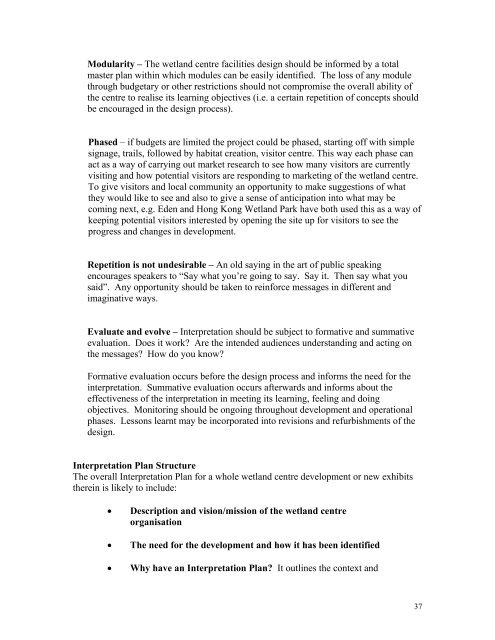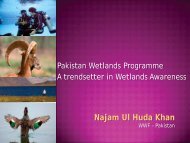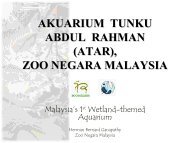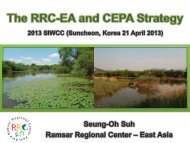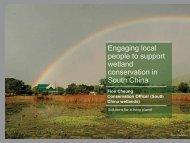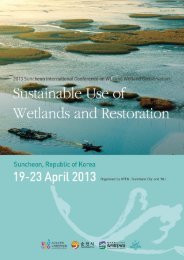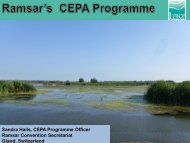developing a wetland centre, English - Wetland Link International
developing a wetland centre, English - Wetland Link International
developing a wetland centre, English - Wetland Link International
You also want an ePaper? Increase the reach of your titles
YUMPU automatically turns print PDFs into web optimized ePapers that Google loves.
Modularity – The <strong>wetland</strong> <strong>centre</strong> facilities design should be informed by a totalmaster plan within which modules can be easily identified. The loss of any modulethrough budgetary or other restrictions should not compromise the overall ability ofthe <strong>centre</strong> to realise its learning objectives (i.e. a certain repetition of concepts shouldbe encouraged in the design process).Phased – if budgets are limited the project could be phased, starting off with simplesignage, trails, followed by habitat creation, visitor <strong>centre</strong>. This way each phase canact as a way of carrying out market research to see how many visitors are currentlyvisiting and how potential visitors are responding to marketing of the <strong>wetland</strong> <strong>centre</strong>.To give visitors and local community an opportunity to make suggestions of whatthey would like to see and also to give a sense of anticipation into what may becoming next, e.g. Eden and Hong Kong <strong>Wetland</strong> Park have both used this as a way ofkeeping potential visitors interested by opening the site up for visitors to see theprogress and changes in development.Repetition is not undesirable – An old saying in the art of public speakingencourages speakers to “Say what you’re going to say. Say it. Then say what yousaid”. Any opportunity should be taken to reinforce messages in different andimaginative ways.Evaluate and evolve – Interpretation should be subject to formative and summativeevaluation. Does it work? Are the intended audiences understanding and acting onthe messages? How do you know?Formative evaluation occurs before the design process and informs the need for theinterpretation. Summative evaluation occurs afterwards and informs about theeffectiveness of the interpretation in meeting its learning, feeling and doingobjectives. Monitoring should be ongoing throughout development and operationalphases. Lessons learnt may be incorporated into revisions and refurbishments of thedesign.Interpretation Plan StructureThe overall Interpretation Plan for a whole <strong>wetland</strong> <strong>centre</strong> development or new exhibitstherein is likely to include:• Description and vision/mission of the <strong>wetland</strong> <strong>centre</strong>organisation• The need for the development and how it has been identified• Why have an Interpretation Plan? It outlines the context and37


